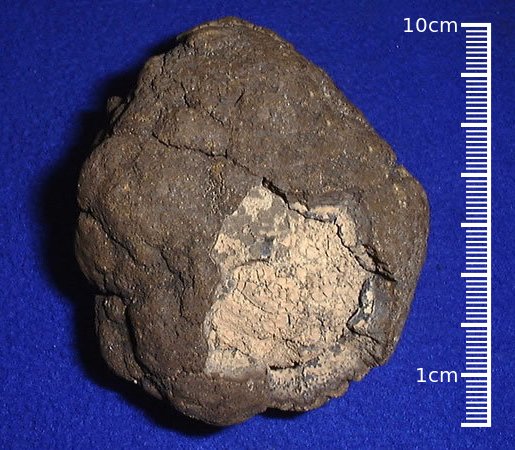Application of manganese

manganese ore
Manganese has no satisfactory substitute in its major applications, which are related to metallurgical alloy use. In minor applications, (e.g., manganese phosphating), zinc and sometimes vanadium are viable substitutes. In disposable battery manufacture, standard and alkaline cells using manganese will probably eventually be mostly replaced with lithium battery technology.
Steel
Manganese is essential to iron and steel production by virtue of its sulfur-fixing, deoxidizing, and alloying properties. Steelmaking, including its ironmaking component, has accounted for most manganese demand, presently in the range of 85% to 90% of the total demand. Among a variety of other uses, manganese is a key component of low-cost stainless steel formulations.
Small amounts of manganese improve the workability of steel at high temperatures, because it forms a high melting sulfide and therefore prevents the formation of a liquid iron sulfide at the grain boundaries. If the manganese content reaches 4% the embrittlement of the steel becomes a dominant feature. The embrittlement decreases at higher manganese concentrations and reaches an acceptable level at 8%. Steel containing 8 to 15% of manganese can have a high tensile strength of up to 863 MPa. Steel with 12% manganese was used for the British steel helmets. This steel composition was discovered in 1882 by Robert Hadfield and is still known as Hadfield steel.
Aluminium alloys
The second large application for manganese is as alloying agent for aluminium. Aluminium with a manganese content of roughly 1.5% has an increased resistance against corrosion due to the formation of grains absorbing impurities which would lead to galvanic corrosion. The corrosion resistant aluminium alloy 3004 and 3104 with a manganese content of 0.8 to 1.5% are the alloy used for most of the beverage cans. Before year 2000, in excess of 1.6 million tonnes have been used of those alloys, with a content of 1% of manganese this amount would need 16,000 tonnes of manganese.
Other uses
Methylcyclopentadienyl manganese tricarbonyl is used as an additive in unleaded gasoline to boost octane rating and reduce engine knocking. The manganese in this unusual organometallic compound is in the +1 oxidation state.
Manganese(IV) oxide (manganese dioxide, MnO2) is used as a reagent in organic chemistry for the oxidation of benzylic alcohols (i.e. adjacent to an aromatic ring). Manganese dioxide has been used since antiquity to oxidatively neutralize the greenish tinge in glass caused by trace amounts of iron contamination. MnO2 is also used in the manufacture of oxygen and chlorine, and in drying black paints. In some preparations it is a brown pigment that can be used to make paint and is a constituent of natural umber.
Manganese(IV) oxide was used in the original type of dry cell battery as an electron acceptor from zinc, and is the blackish material found when opening carbon–zinc type flashlight cells. The manganese dioxide is reduced to the manganese oxide-hydroxide MnO(OH) during discharging, preventing the formation of hydrogen at the anode of the battery.
MnO2 + H2O + e− → MnO(OH) + OH−
The same material also functions in newer alkaline batteries (usually battery cells), which use the same basic reaction, but a different electrolyte mixture. In 2002 more than 230,000 tons of manganese dioxide was used for this purpose.
The metal is very occasionally used in coins; until 2000 the only United States coin to use manganese was the "wartime" nickel from 1942–1945. An alloy of 75% copper and 25% nickel was traditionally used for the production of nickel coins. However, because of shortage of nickel metal during the war, it was substituted by more available silver and manganese, thus resulting in an alloy of 56% copper, 35% silver and 9% manganese. Since 2000, dollar coins, for example the Sacagawea dollar and the Presidential $1 Coins, are made from a brass containing 7% of manganese with a pure copper core. In both cases of nickel and dollar, the use of manganese in the coin was to duplicate the electromagnetic properties of a previous identically sized and valued coin, for vending purposes. In the case of the later U.S. dollar coins, the manganese-alloy was an attempt to duplicated properties of the copper/nickel alloy used in the previous Susan B. Anthony dollar.
Manganese compounds have been used as pigments and for the coloring of ceramics and glass. The brown color of ceramic is sometimes based on manganese compounds. In the glass industry manganese compounds are used for two effects. Manganese(III) reacts with iron(II). The reaction induces a strong green color in glass by forming less-colored iron(III) and slightly pink manganese(II), compensating the residual color of the iron(III). Larger amounts of manganese are used to produce pink colored glass.
Up page:How does the ball mill work
Down page:Maintenance of equipment in mine
- Introduction of gold trommel machine
- Mill balls and water influence the effic
- Fault handling of jaw crusher
- process of Stone Aggregates produced by
- How to maintain ball mill with the lubri
- China mining machinery need technology i
- How to choose jaw crusher--let me help y
- Domestic Mining Machinery Trends brief a
- The future development trends and prospe
- The development of ball miller feeding
- Songling advise for the purchase skills
- Mining mechanization hot ascension of Mi
- The property of Flotation Machine
- The Most Important Factor in the Process
- Obvious advantages of ball mill
- Environmental Protection Idea must be st
- The Benefits of central bank cutting int
- Stone production industry promote the c
- The future of the drying equipment in Ch
- Rock Crusher Maintenance

 Jenny
Jenny